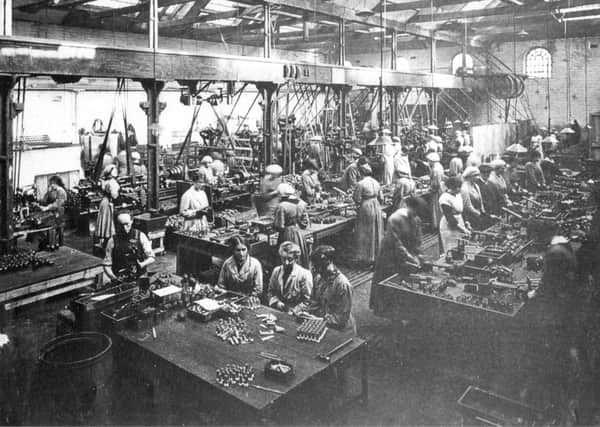From Falkirk foundry to Peruvian palace


But the works were making more than high quality castings. They were creating a class of men who had learned not only the manufacturing skills but how to design new products and bring them to the market at a price that ensured success.
These entrepreneurs transformed Falkirk over the next century but the first stuttering attempt ended in failure.
Advertisement
Hide AdAdvertisement
Hide AdThis was the Dalderse Foundry Company established by former Carron man George Sherriff on the canal at Abbotshaugh in 1804. He met with only limited success and the firm closed its doors just six years later.
However, the idea survived and in the same year a group of “gentlemen” led by John Hardy recruited skilled men from Carron and launched the Falkirk Foundry Company with premises on the south side of the canal next to the main road.
By 1819 it was in business with a contract for iron columns for a local timber yard.
Like Carron and all the foundries which followed, the company made anything they thought they could sell and, with a world-wide demand for cast iron, there was no real need for specialisation.
Advertisement
Hide AdAdvertisement
Hide AdEarly success caught the attention of outside investors and in 1830 the Kennard family from England bought into the business, a connection that lasted for well over a century. For decades the firm was called Kennards and the name lived on long after it became Falkirk Iron Company in 1864.
The Crimean War in the 1850s gave the firm a great boost and to meet the demand Castlelaurie Foundry was built on the north side of the canal.
Cannons and huge quantities of shot and shell were turned out and in 1854 the company manufactured 1200 ‘Canada stoves’ for the Government in two weeks and exported another 3000 to France produced at an astonishing rate of 400 a day!
By this time too the company had scaled up its plant to allow for the casting of huge articles like the 12 foot high ornamental gates for the palace in Lima, Peru. And to prove that size isn’t everything the works turned out thousands of the little pots marked “FALKIRK” for export to the plantations in the USA and to South Africa.
Advertisement
Hide AdAdvertisement
Hide AdThe First World War was another period of high demand and three million bombs, shells, grenades and mortars were supplied to the military.
The company produced a fantastic book of pictures showing the war workers including the famous ‘munitionettes’ drafted in as the men left for the front. By this time there were well over 1000 workers and the firm had expanded to over 40 acres.
But the ending of the profitable war work and a general fall in demand for cast iron eventually led to mergers in the UK and in 1929 the firm became part of Allied Ironfounders. A series of complicated takeovers and mergers followed as the decline continued.
The company was successful under the Glynwed name for some years but in 1982 the Falkirk operation was wound down and closed.
Advertisement
Hide AdAdvertisement
Hide AdThis was just two years after Carron and was a bitter blow to the community since much of Falkirk’s prosperity had come from these two giants.
Today there is very little left. A few buildings on the Castlelaurie site have been preserved along with the handsome art deco office building of 1936.
Not much to show for all the blood, sweat and tears of the men and women who built our community.
We need to do more!